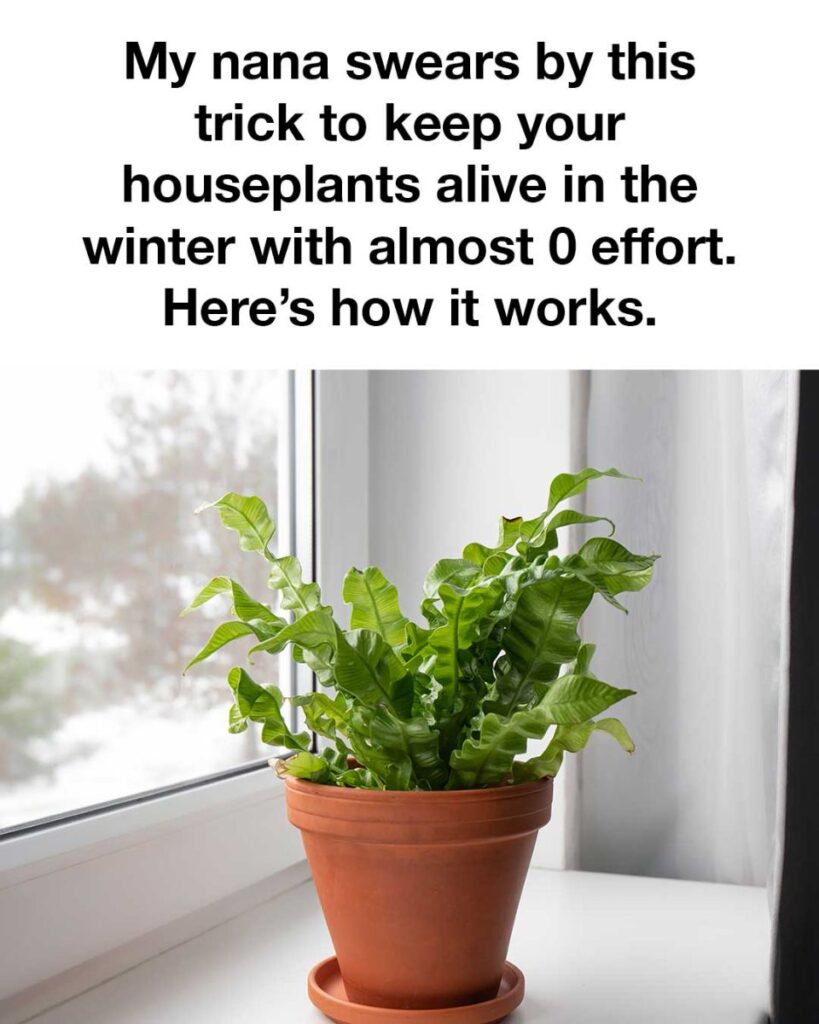As the days grow shorter and temperatures drop, many plant enthusiasts find themselves struggling to keep their beloved houseplants thriving. Winter can be a challenging season for indoor plants, but with the right care and a few clever tricks, you can ensure your green companions stay healthy and vibrant. In this article, we’ll explore a simple yet effective method that my nana swears by to keep houseplants alive with almost zero effort during the winter months.
Understanding the Challenges of Winter for Houseplants
Winter presents several challenges for houseplants, including reduced sunlight, lower humidity, and cooler temperatures. These factors can lead to slower growth, wilting, and even plant death if not addressed properly. Understanding these challenges is the first step in providing the appropriate care that your plants need to survive the winter season.
The Secret Trick My Nana Swears By
My nana’s secret to keeping houseplants alive in winter is surprisingly simple: she uses a combination of strategic placement and a homemade humidity booster. By placing plants in optimal locations and using a DIY humidity tray, she ensures that her plants receive the right amount of light and moisture, even during the coldest months.
How This Trick Works to Keep Plants Alive
The trick works by addressing two of the main challenges of winter: light and humidity. By placing plants near windows that receive the most sunlight, they get the necessary light for photosynthesis. The humidity tray, made by placing a shallow dish filled with water and pebbles under the plant pots, increases the moisture in the air around the plants as the water evaporates, mimicking a more humid environment.
Benefits of Using This Method
This method is not only easy to implement but also highly effective. It requires minimal effort and resources, making it accessible to anyone. The increased humidity helps prevent issues like dry leaf tips and wilting, while the strategic placement ensures plants get enough light to maintain their health. Additionally, this method is eco-friendly and cost-effective.
Step-by-Step Guide to Implementing the Trick
1. Identify the sunniest spots in your home and move your plants to these locations. South or west-facing windows are usually the best.
2. Create a humidity tray by filling a shallow dish with pebbles and water. Place the plant pot on top, ensuring the bottom of the pot is above the water level to prevent root rot.
Next Page
2. Create a humidity tray by filling a shallow dish with pebbles and water. Place the plant pot on top, ensuring the bottom of the pot is above the water level to prevent root rot.
3. Check the water level in the tray regularly and refill as needed to maintain humidity.
4. Rotate plants every few weeks to ensure even light exposure.
Common Mistakes to Avoid
One common mistake is placing plants too close to windows where they might get too cold from drafts. Ensure there’s a buffer between the plant and the window. Another mistake is overwatering; with reduced growth in winter, plants need less water. Always check soil moisture before watering. Lastly, avoid placing plants near heating vents, as the dry, hot air can damage them.
Additional Tips for Winter Houseplant Care
In addition to the humidity tray and strategic placement, consider misting your plants occasionally to boost humidity. Grouping plants together can also create a microenvironment with higher humidity. Use grow lights if natural light is insufficient. Finally, reduce fertilization during winter, as most plants are in a dormant phase and don’t require as many nutrients.
Conclusion: Effortless Plant Care in Winter
With my nana’s simple trick, you can keep your houseplants healthy and thriving throughout the winter with minimal effort. By addressing the key challenges of light and humidity, and avoiding common pitfalls, you can enjoy lush, vibrant plants all year round. Embrace these easy steps and watch your indoor garden flourish even in the coldest months.

